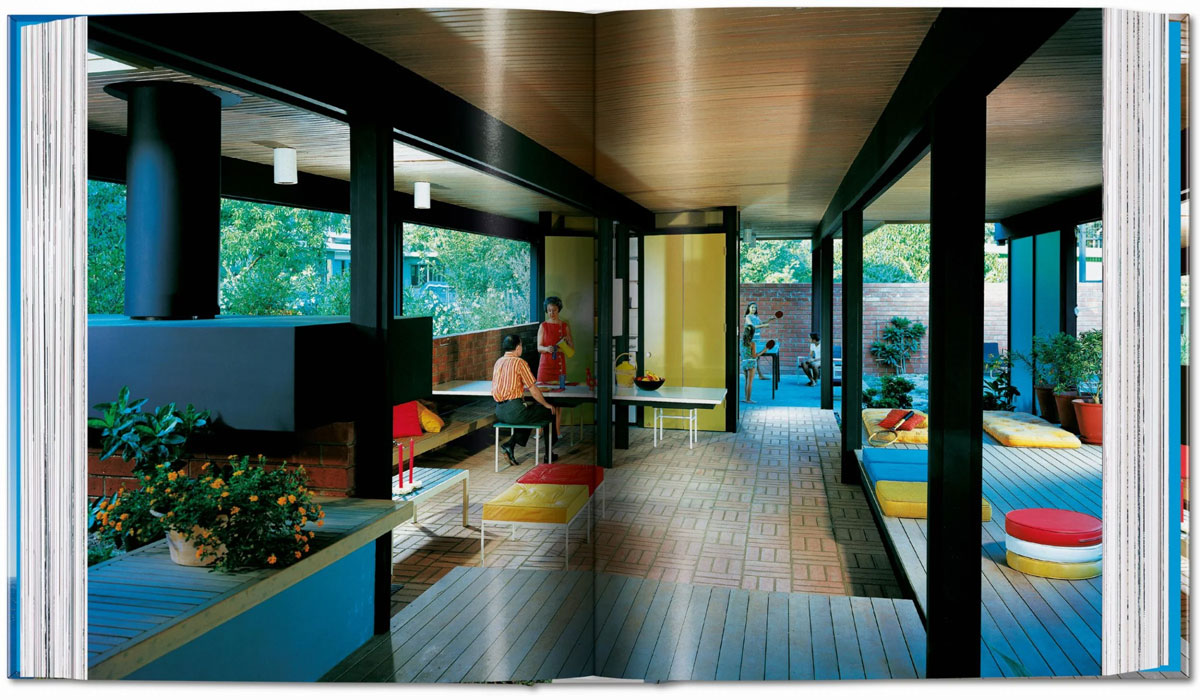BOOK: Julius Shulman-Modernism Rediscovered, Taschen Publications
 The term California Modernism is used to describe the modernist movement in architecture as it evolved in California, specifically Los Angeles and the area surrounding it, from the 1930s through the 1960s. Hallmarks of this style are attention to indoor-outdoor living, open plans, rectilinear structures often constructed with steel frames, and extensive use of glass. The term is most often used to refer to the “Case Study House Program” initiated by John Entenza in 1945, and to modernist residential structures in general. Architects associated with the style are Richard Neutra, Rudolf Schindler, Charles and Ray Eames, Gordon Drake, Albert Frey, John Lautner, Pierre Koenig, and Rafael Soriano. Public perception of this movement is commonly attributed to the photographs of Julius Shulman, as published in architectural and interior design magazines during the 1950s. The buildings burned in our memories, which to us represent the spirit of ’50s and ’60s architectural design, were those whose pictures were widely published in magazines and books; but what about those that got lost in the process, hardly or never appearing in publication? The exchange of visual information is crucial to the development, evolution, and promotion of architectural movements. If a building is not widely seen, its photograph rarely or never published, it simply does not enter into architectural discourse. Many buildings photographed by Julius Shulman suffered this fate, their images falling into oblivion. With the Book “Julius Shulman-Modernism Rediscovered”, Taschen Publications brings them to light, paying homage to in all its forms. Bringing together nearly 300 forgotten masterpieces, “Modernism Rediscovered” pays tribute to these lesser known yet outstanding contributions to the modern architectural movement. It’s like sneaking into a private history, into homes that have rarely been seen and hardly appreciated as of yet.-Dimitris Lempesis
The term California Modernism is used to describe the modernist movement in architecture as it evolved in California, specifically Los Angeles and the area surrounding it, from the 1930s through the 1960s. Hallmarks of this style are attention to indoor-outdoor living, open plans, rectilinear structures often constructed with steel frames, and extensive use of glass. The term is most often used to refer to the “Case Study House Program” initiated by John Entenza in 1945, and to modernist residential structures in general. Architects associated with the style are Richard Neutra, Rudolf Schindler, Charles and Ray Eames, Gordon Drake, Albert Frey, John Lautner, Pierre Koenig, and Rafael Soriano. Public perception of this movement is commonly attributed to the photographs of Julius Shulman, as published in architectural and interior design magazines during the 1950s. The buildings burned in our memories, which to us represent the spirit of ’50s and ’60s architectural design, were those whose pictures were widely published in magazines and books; but what about those that got lost in the process, hardly or never appearing in publication? The exchange of visual information is crucial to the development, evolution, and promotion of architectural movements. If a building is not widely seen, its photograph rarely or never published, it simply does not enter into architectural discourse. Many buildings photographed by Julius Shulman suffered this fate, their images falling into oblivion. With the Book “Julius Shulman-Modernism Rediscovered”, Taschen Publications brings them to light, paying homage to in all its forms. Bringing together nearly 300 forgotten masterpieces, “Modernism Rediscovered” pays tribute to these lesser known yet outstanding contributions to the modern architectural movement. It’s like sneaking into a private history, into homes that have rarely been seen and hardly appreciated as of yet.-Dimitris Lempesis






